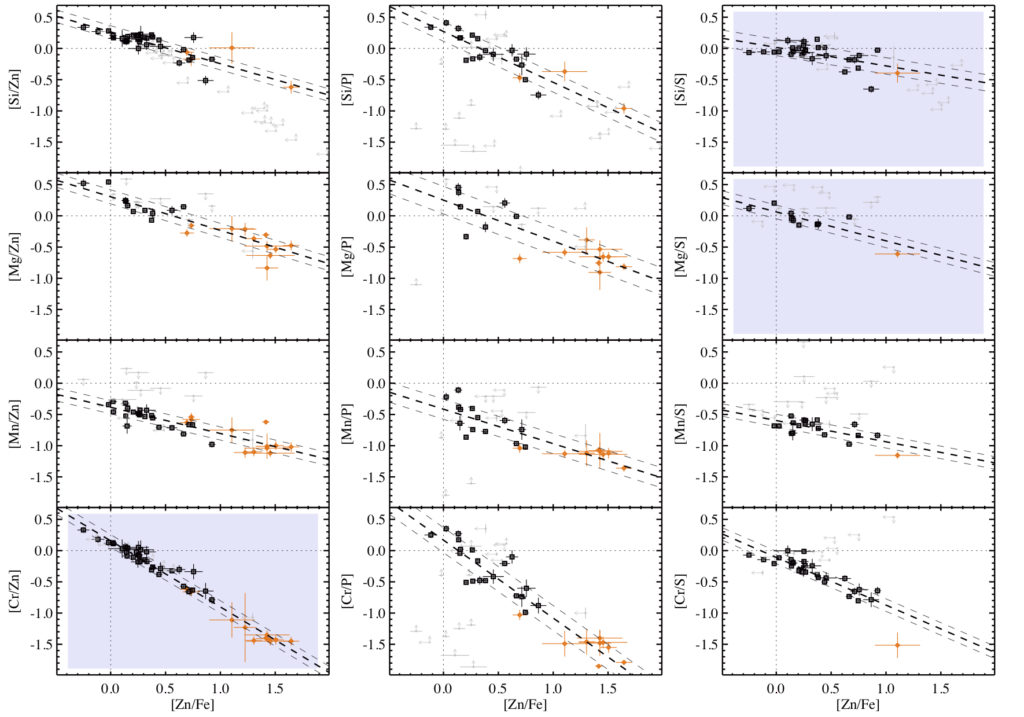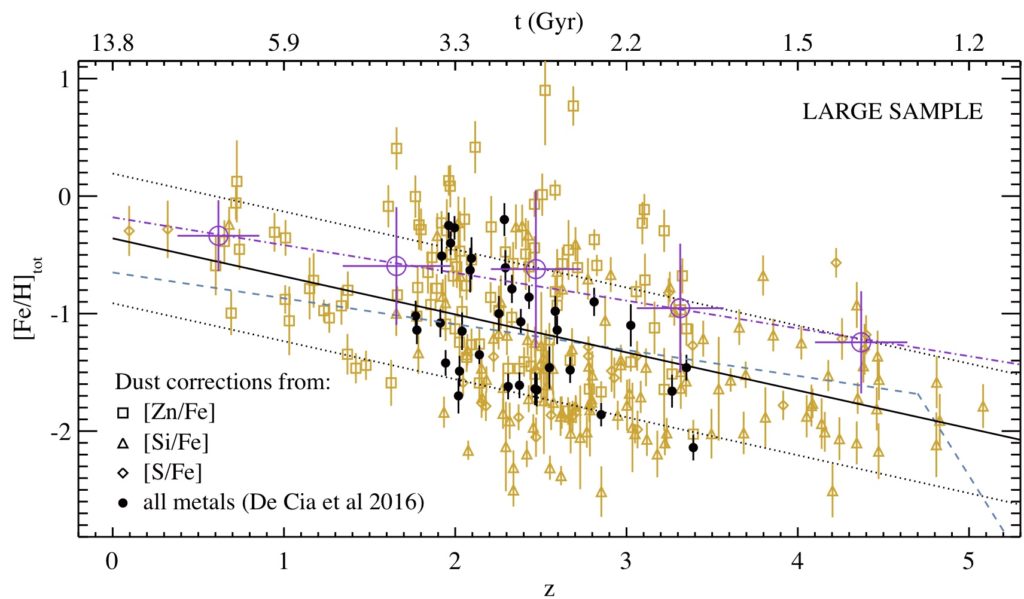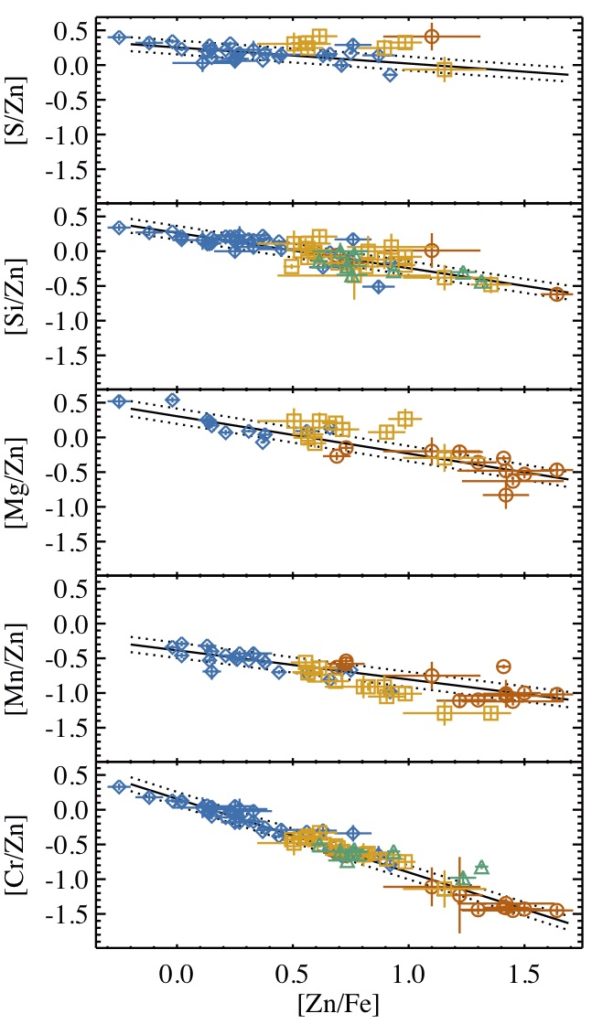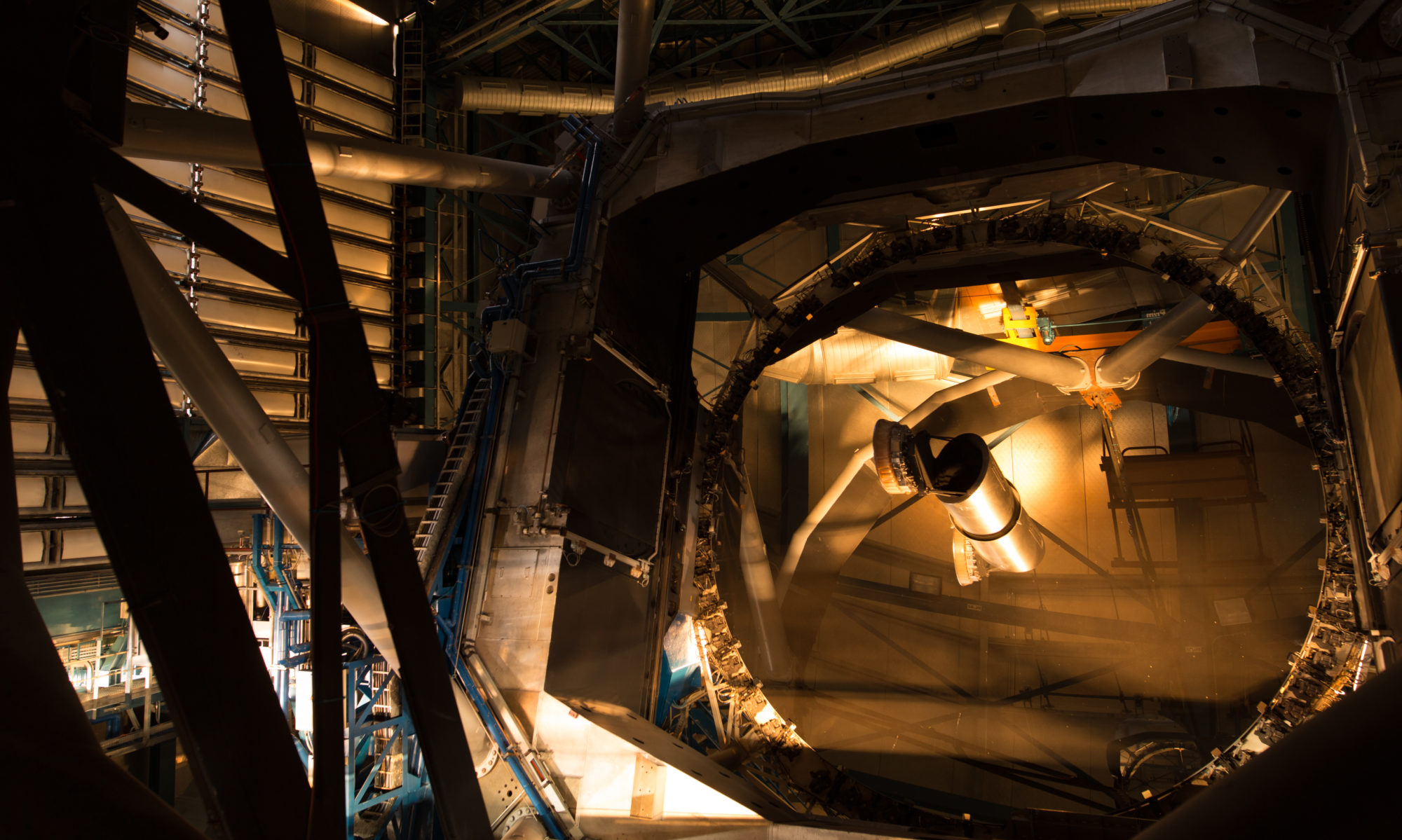The Interstellar Medium (ISM) is a multi-phase complex that comprises gas at different temperatures and densities, including ionized, atomic, molecular gas, and dust particles. Here the focus is on the neutral ISM, meaning the HI gas in galaxies at any redshift, which is more extended than the stellar disk both in radius and height, it is dominated by HI and singly ionized metals, has relatively small velocities (within a few hundred km/s), and a small ionization fraction (typically up to 2% in the warm neutral medium in the Galaxy).
An extremely powerful way to investigate the neutral ISM out to high-z is absorption-line spectroscopy of UV/optical bright background sources, such as Quasars (QSOs). Damped Lyman-α Absorbers (DLAs, defined by N(HI) ≥ 2 × 10^20 cm−2) are selected in absorption towards QSOs and associated with gas inside and around galaxies. DLAs are the largest cosmic reservoir of HI (e.g. Wolfe et al. 1995) as well as metals at z > 3 (Peroux & Howk, ARA&A in prep.). They probe neutral gas in/around galaxies of a wide range of masses, including low-mass low-metallicity distant galaxies, and their abundances can be studied in great details in terms of metallicity, nucleosynthesis, and dust content through absorption-line spectroscopy. This makes DLAs powerful complements to the study of galaxies and their evolution.
Dust depletion in DLAs and the Galaxy
In De Cia et al. 2016 we developed a breakthrough method to characterize the metal content (dust depletion) in DLAs and the Galaxy. The method is based on the study of the relative abundances of metals, and does not assume a specific metallicity of the gas. This offers a fundamental reference for the characterization of metallicity, nucleosynthesis, and dust properties in the ISM and CGM from absorption-line spectroscopy. We also found that the DLAs with the least dust content (and lower metallicity) show α-element enhancements in their ISM which are very similar to the Galaxy levels.


Refractory elements, i.e. those with high condensation temperatures as measured in the lab, show low abundances in the ISM in most environments, down to a small percent of the abundances of more volatile metals. As an example, 90-99% of iron is missing from the gas-phase in the Galaxy ISM. The reason is that large fractions of the refractory metals are incorporated into dust grains and are thus no longer observable in the gas phase. This phenomenon is called dust depletion (e.g. Field 1974; Phillips et al. 1982, 1984; Savage & Sembach 1996, Jenkins 2009, De Cia et al. 2016, De Cia 2018). The strength of dust depletion depends on the gas density and metal content, and it heavily affects the measurements of ISM metal abundances in any environment. In fact, dust depletion is important even for volatile elements, such as Zn, S, or O.
Cosmic chemical evolution
In De Cia et al. 2018a we derived the cosmic evolution of dust-corrected metallicity in the neutral gas, after correcting the observed abundances for dust depletion using our new method and a simplified version. We found that the DLA metallicities decrease with redshift, by a factor of 50–100 from today to ∼12.6 billion years ago (z = 5). When including dust corrections, the average DLA metallicities are 0.4–0.5 dex higher than without dust corrections. The upper envelope of the relation between metallicity and z reaches solar metallicity at z <~ 0.5, although some systems can have solar metallicity already out to z ~ 3.

De Cia et al. 2018a.
DLA gas chemically behaves like the ISM
In De Cia 2018 I compared the observed relative abundances ([X/Zn], [Zn/Fe], and [O/Si]) in the Galaxy, Magellanic Clouds, and DLAs. The same sequences of relative abundances (dust-depletion sequences) are valid for the different environments. These sequences are driven by the presence of dust in the ISM and seem “universal”. The metal and dust properties in the neutral ISM appear to follow a similar behavior in different environments, regardless of the starformation history. Thus, DLA gas behaves like the neutral ISM, at least from a chemical point of view.

